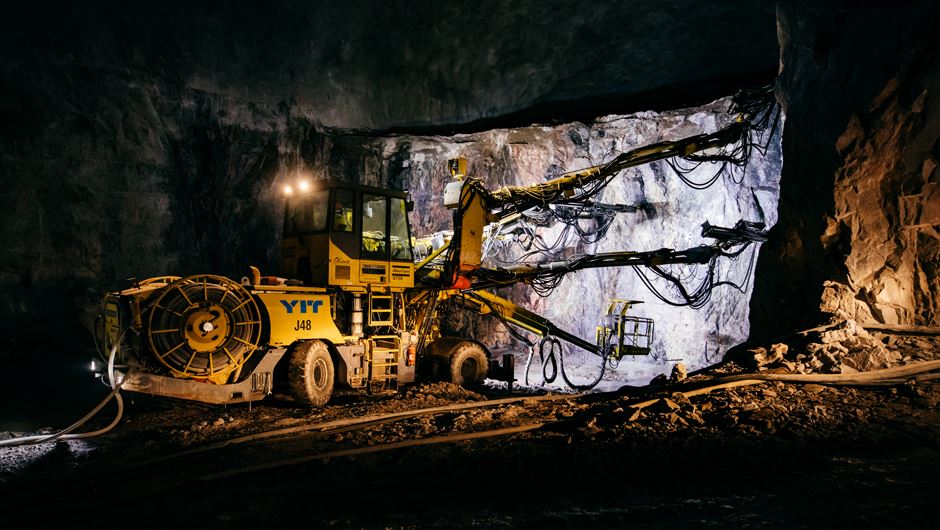Sustainable data centers as a service
- Construction
- Blog
- 11/9/2020
Thesis: Significant potential for enhancing soil material circular economy
Enhancing soil material circular economy plays a significant role in reducing the carbon dioxide emissions from construction and improving the economic preconditions of projects.

This was revealed by the thesis I wrote for YIT, in which an analysis of the current state of soil material circular economy was conducted for the company.
The recycling of soil materials consists fundamentally of the management of supply and demand. Some construction projects produce surplus soil materials as a result of excavation and earthworks, while other projects need more materials when low-quality clay is replaced with other materials.
For example, in traffic infrastructure construction, large volumes of low-quality clay and sand are replaced with stone materials when load-bearing road layers are constructed. Replacing soil materials with other soil materials leads to a situation in which an opportunity for reuse must be found for one material or another. If no such opportunity can be found, the materials must be disposed of at soil material landfill sites.
Monitoring and planning enhances the utilisation of surplus materials
In recent years, increasing attention has been paid to circular economy both in academic research and in the business plans of companies. However, in infrastructure construction, the recycling of soil materials has played a key role already for decades.
YIT has also carried out project-specifically planned recycling of soil materials for a long time already. Table 1 shows how different surplus soil materials have been recycled at YIT:
|
Material |
Reusing opportunity |
|
Stone materials |
Surplus stone materials are processed and used in road construction and other load-bearing structures, for example. |
|
Moraine and sand |
Used as filling soil and in structures that do not have high load-bearing requirements. |
|
Clay and silt |
Recycled in substrate production, landscaping and noise barrier construction, for example. |
Table 1
In my thesis, I determined that YIT has significant potential for enhancing the recycling of soil materials by creating a systematic process for monitoring soil material volumes.
By monitoring and proactively planning soil material surpluses and demands, the utilisation of surplus materials can be enhanced. It is likely that not all surplus soil materials can be recycled but the goal of launching the activities is to decrease the volume of soil materials disposed of at a landfill site and facilitate the determination of soil material surpluses and demands on different construction sites.
Challenges related to soil material circular economy today
As part of my thesis, the current state of soil material circular economy was described, with the aim of identifying its key challenges. The study identified four key challenges related to the recycling of soil materials.
- Information sharing is one of the challenges in soil material recycling: the distribution of up-to-date information at the level of the entire project portfolio is challenging. The study revealed that up-to-date information about moving material flows is an essential factor in the success of extensive soil material recycling.
- The lack of reusing opportunities poses challenges for the recycling of soil materials as it is difficult to find reusing opportunities for all surplus soil materials. Reuse approval procedures may also pose challenges.
- Inadequate planning is another soil material recycling challenge: the logistics schedule for soil materials is not taken into account in production planning and, as a result, the recycling of soil materials is often part of the operational management of the project. In addition, when plans are made, there is no absolute certainty about the quality of soil materials.
- The lack of intermediate storage areas is also one of the challenges in soil material recycling: it is extremely challenging to schedule two or more construction sites to harmonise their operations so that soil materials could be transported directly from on site to another. The study indicated that soil material storage areas played a significant role in successful soil material recycling.
The successful recycling of soil materials depends on stakeholder cooperation, careful planning and recycling solutions developed by the project personnel.
Systematic process and cooperation enable the better management of material flows
After gaining an understanding of the current state of soil material recycling and its development opportunities, YIT’s Infra projects segment has launched a development project to enhance the recycling of soil materials. The project to develop soil material circular economy is closely connected with YIT’s emission reduction targets as improved operations, waste reduction and new circular economy solutions contribute to the achievement of these targets.
The recycling of soil materials also has significant potential for improving the economic performance of projects. Soil material recycling generates cost savings by reducing logistics costs, landfilling fees and costs associated with the use of virgin materials.
Potential circular economy solutions in infrastructure construction have been featured prominently in several discussion forums and YIT hopes that there will be increasing interest in circular economy solutions among other infrastructure constructors and that this will boost the growth of the circular economy material market.
Cooperation and efficient information management are essential for the development of soil material circular economy, which can, in turn, make infrastructure construction more sustainable and efficient.
Read more on Infrastructure projects



